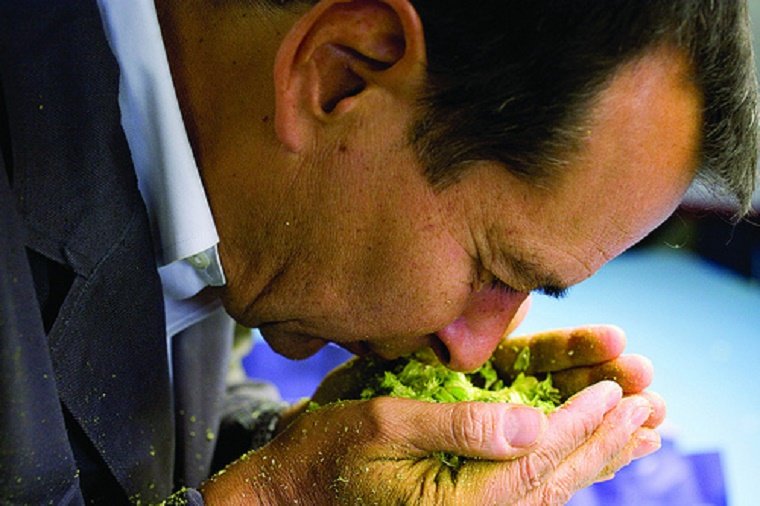Start 14-Day Trial Subscription
*No credit card required

Hallertau: Hop Nobility and its Bostonian Knight
If you've seen the Sam Adams commercial with founder Jim Koch plunging facefirst into a handful of hops, it's probably Hallertau Mittelfrüh, a hop of such legendary aroma that Koch once took out scratch and sniff magazine ads with its distinctive scent.
The story of the Hallertau hop is as tangled as the bine itself, but it is generally agreed upon that the first documented act of hop cultivation took place in the eponymous Bavarian locale. The year 736 is often cited, but as any drinker knows, dates get fuzzy; especially after a millennia.
Some things haven’t changed – Hallertau remains among the top hop-producing regions in the world. But what exactly is a Hallertau hop? It’s largely a matter of nomenclature.
The original hop of the Hallertau is known as Hallertau Mittelfrüh or Hallertauer Mittelfrüher, in reference to the region and the time of season it is harvested, “middle-early”. Regarded as one of the five Noble hops and by many as the ideal German lager hop, it provides a distinct peppery spice along with herbal or citrus notes and a pleasant bitterness.
Unfortunately, this trailblazing breed is on the decline due to low crop yields and susceptibility to disease, particularly the fungus verticillium. As a result, Hallertau Mittelfrüh is being supplanted by similar, hardier breeds or different varietals entirely.
So where can you try these succulent nuggets? If you’ve ever had a Samuel Adams Boston Lager, then you already have. For over 30 years, Koch and Sam Adams brewers have traveled to Hallertau and other Bavarian regions each year to personally source Hallertau Mittelfrüh and Tettnang Tettnanger, the two hops used in Boston Lager. Their success has helped develop a special relationship between the Bavarian hop growers and Sam Adams. "At one point in the 1990s, Hallertau Mittelfrüh hops were falling prey to viruses and were nearly extinct. Samuel Adams worked with the German beer industry to determine the root of the problem and found that basic hygiene, like washing tractor tires, would prevent disease from spreading among hops," Koch told BC. As a result, Koch became one of two Americans ever named Chevalier of the Order of the Hop, a medieval guild of hop growers and merchants.
As the main American buyer for Hallertau hops, Sam Adams also has a say in when they are harvested and how they are stored. According to Koch, "Hops that are not perfectly green but see some browning and age on the vine, are best to use in a brew."
Despite Sam Adams' backing, Hallertau Mittelfrüh is increasingly hard to come by, and even if you do happen upon hops billed as such, they may be a different breed, or grown outside of Hallertau – which brings us back to the issue of nomenclature.
The name Hallertau can refer to both the cultivar and growing region, and due to the coveted nature of the Noble hop, commercial growers may play fast and loose with the designation. Therefore, unless a hop is given the lengthy title Hallertau Hallertauer Mittelfrüh to distinguish both the breed and region, it’s hard to be sure.
The most widely accepted replacements for the original Noble hop are Hallertau Gold and Hersbrucker, more wilt-resistant breeds with similar characteristics that are often marketed as the original. Koch also lists the German varieties Hallertau Herkules, Hallertau Magnum, Hallertau Taurus. The list goes on – "there's a new hop variety that is a cross between Hallertau and other hops including Crystal hops, grown in Washington, which are a blend of German Hallertau, Cascade, Brewer’s Gold and Early Green hops." He's even got some growing in his Massachusetts hop garden – Boston Hallertau.
These may not all be true Hallertau Mittelfrüh hops, but they carry on the tradition, and when it comes to nobility, nothing matters more.



